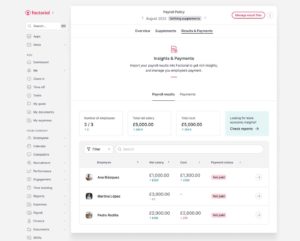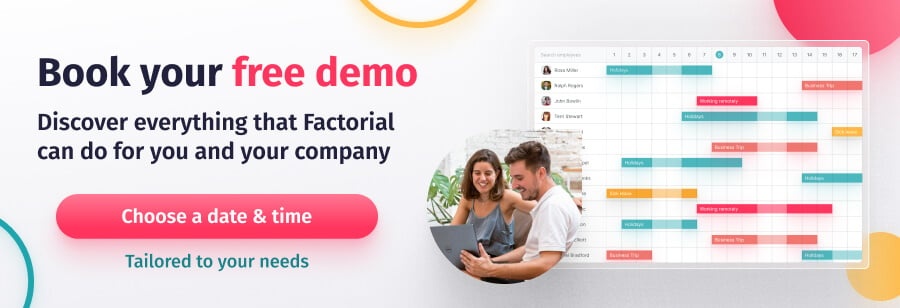Payroll services are what keeps organisations ticking. It ensures that employees are compensated accurately and on time while navigating the complexities of taxes, benefits, and compliance.
In this article, we’ll unlock the elements of this essential business function and take a look at what it takes to run an effective payroll process. We’ll be covering the following:
Table of Contents
What is payroll?
The term ‘payroll’ actually refers to a list of employees detailing how much they need to be paid. But the modern definition is more nuanced, and understanding it is vital for both employers and employees.
The basic concept of payroll is calculating and distributing employee earnings, but such a simple description doesn’t encompass the various forms of compensation, deductions, and tax obligations that payroll departments have to factor in to ensure they get it right.
Key elements of payroll
Payroll is a critical component of every organisation and encompasses essential elements that ensure employees are compensated accurately and on time while maintaining compliance with tax and employment law. This, in turn, fosters a positive work environment and ensures your business remains on the right side of employment law.
- Employee Compensation – Central to payroll is calculating and distributing employees’ gross pay. This includes various forms of compensation, such as hourly employee wages, salaries, commissions, and performance-based bonuses.
- Deductions – It also involved managing deductions, including compulsory deductions, like income taxes, and voluntary deductions, like company benefits
- Tax Deductions – Employers must adhere to tax regulations by withholding and remitting the correct income tax and National Insurance. The payroll department is also responsible for preparing and filing tax reports and forms.
- Benefits Administration – Payroll also plays a role in the administration of employee benefits and pre-tax deductions, including health insurance, pension contributions, paid time off, and other perks the employer offers, like salary sacrifice schemes.
- Record Keeping – Accurate record-keeping is a critical part of payroll. For transparency and compliance, employers must maintain detailed records of payroll transactions, money paid, earnings, deductions, and tax-related data.
- Payroll Software and Technology – Many organisations use payroll software and services to automate and streamline payroll functions. These solutions require effective management by the team responsible but help increase efficiency and reduce errors.
How can companies run payroll?
Running payroll in a company is a global process involving several key steps:
- Collect Employee Information – Gather details about each employee, including their work hours, earnings, tax information, and any deductions or benefits.
- Calculate Earnings – Determine the total amount each employee has earned, considering regular pay, overtime, bonuses, and other forms of compensation.
- Deduct Taxes and Contributions – Subtract the necessary payroll taxes, like income tax, National Insurance, and pension contributions, as well as employee benefits like health insurance and authorised deductions, like check-off payments to unions.
- Comply with Regulations – Stay on top of tax laws, minimum wage requirements, and other employment regulations to keep the business compliant.
- Generate Payments – This means simply paying your employees, but generating what can be hundreds or thousands of payments every month can get complex. BACs (Bankers’ Automated Clearing Service) is the most commonly used method in the UK with 90% of the workforce receiving payment via the processing scheme. However, cash, cheques and other online payment methods are also used.
- Provide Pay Statements – Employers are required by law to give their employees detailed pay statements that show their earnings, deductions, and net pay.
- Handle Tax Filings – Not only must employers pay tax, but they also need to submit the necessary tax forms and reports to government agencies as required.
- Maintain Records – Keep comprehensive records of payroll transactions, tax filings, and employee information.

Who is responsible for managing payroll?
The responsibility for managing and processing payroll will differ slightly from company to company. In most cases, payroll will usually sit with the organisation’s human resources department or a dedicated payroll department.
Larger organisations are more likely to have a dedicated payroll department, whereas in smaller companies, HR personnel may handle both HR and payroll responsibilities. Regardless of the structure to manage payroll however, collaboration between HR and payroll is essential to ensure employees are paid accurately and on time while remaining compliant with relevant laws and regulations.
Here’s a breakdown of the key roles involved in managing payroll:
Human Resources (HR) Department
- Employee Data Maintenance – Collecting and updating employee information, such as contact details, tax forms, and benefit elections.
- Time and Attendance Tracking – Overseeing timekeeping systems to record work hours, overtime, sick leave and annual leave accurately during the pay period.
- Benefits Administration – Managing employee benefits like health insurance, workplace pensions contributions, and paid time off.
- Tax Calculations – Handling income tax forms and ensuring accurate tax codes are being used.
- Compliance – Staying informed about employment law and tax regulations to ensure legal compliance.
Payroll Department
- Calculating Payroll – Computing an employee’s gross pay, deductions, and taxes.
- Payment Processing – Generating paychecks, initiating direct deposits, or using electronic payment systems.
- Tax Filing – Preparing and filing tax reports and forms.
- Record Keeping – Maintaining accurate records of payroll transactions, including employee pay history and tax records.
How to improve payroll management
Here are our top tips for improving your payroll services!
- Streamline Operations: Integrate HR and accounting software to create a unified payroll system, making processing payroll, managing employee data and finances easier.
- Foster Trust: Open communication builds trust. When it comes to payroll, this means being transparent with employees by providing clear and accessible information about their earnings and deductions.
- Stay Compliant: Always keep on top of legislation and regulations to ensure your payroll processes comply with changing laws.
- Accessibility Matters: Improve employee access to their payroll information through user-friendly portals or apps. Make it easy for them to engage with their pay.
- Employee Engagement: Once your employees are engaged with the process, get feedback to understand their payroll needs and concerns – this will help you tailor your payroll practices to their preferences.
- Check, Check and Recheck: Keep your audits consistent and regular so you can catch any errors and discrepancies before they become regulation compliance issues.
- Embrace Automation: Automation can save time and resources, so leverage payroll solutions that reduce manual tasks and minimise errors.
- Invest Wisely: Invest in automated payroll software that suits your organisation’s needs. A good software solution can change your payroll management workflow.
- Knowledge Is Power: Train your staff properly on any new software to maximise its potential.
Payroll with Factorial
Factorial’s payroll software simplifies and centralises processes to ensure total control, ease of use, real-time data, and, most importantly, an error-free payday.

Here are some of the things our automated payroll management and accounting software can help you with:
- Efficient Payroll Centralisation: Our software streamlines all your payroll processes into a single platform, making it easy to approve expenses and automatically reimburse them through payroll. You can view these expense requests on your mobile or desktop and categorise them for a more comprehensive spending analysis.
- Automated Task Handling: By automating payroll, you reduce the chances of errors and ensure precise payments. Factorial’s platform automates various tasks, including communication, fixed supplements, and calculations, and seamlessly integrates with your existing providers thanks to an open API. This means it syncs easily with the apps you already use, such as Payflow, Zuchetti, or Sage.
- Customised Workflow Efficiency: Adapt Factorial’s payslip software to your preferences by setting payment cycle lengths, choosing compensation settings, and categorising compensation. You can also seamlessly communicate with your finance department by integrating Factorial’s software into your existing workflows and involving your bookkeeper at every step.
- Informed Decision-Making with Data Insights: Our software provides valuable insights into company costs, salary trends, and employer-paid benefits, enabling you to make well-informed decisions and effectively manage your finances.
Our Automated Payroll Management Software is part of a complete HR software package. Manage time, holidays, your payroll records, performance, and more, all from one place, with Factorial.
Join the 8,000+ companies worldwide that trust us and discover why we’ve earned a spot in G2’s Top 50 HR Products 2023. Choose Factorial because you have better things to do than manual HR work!








